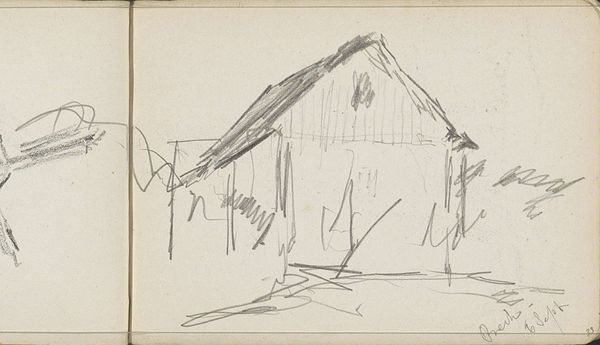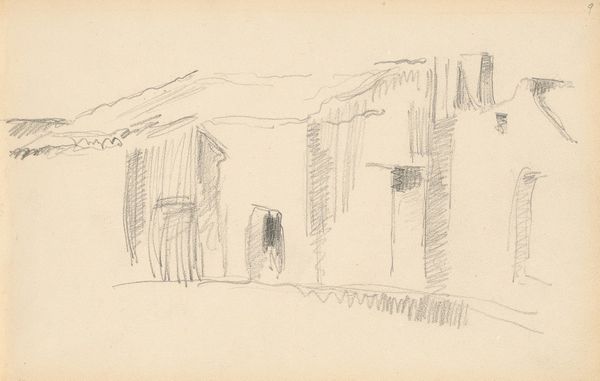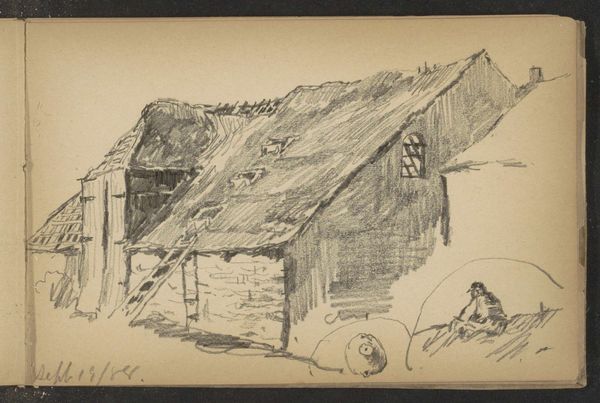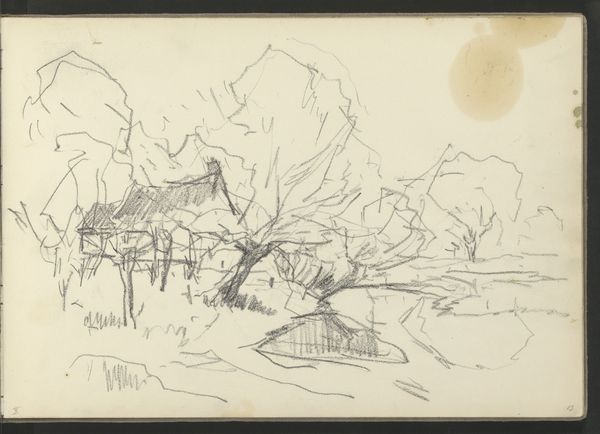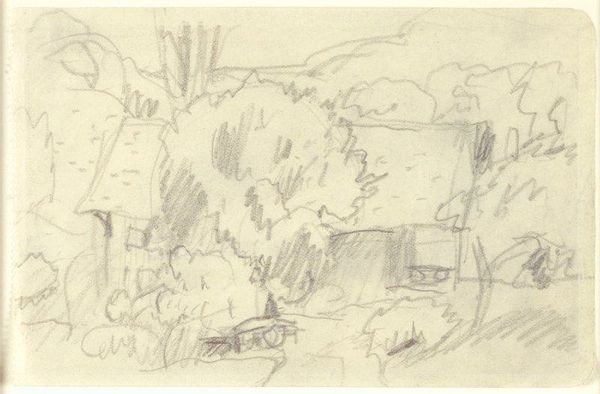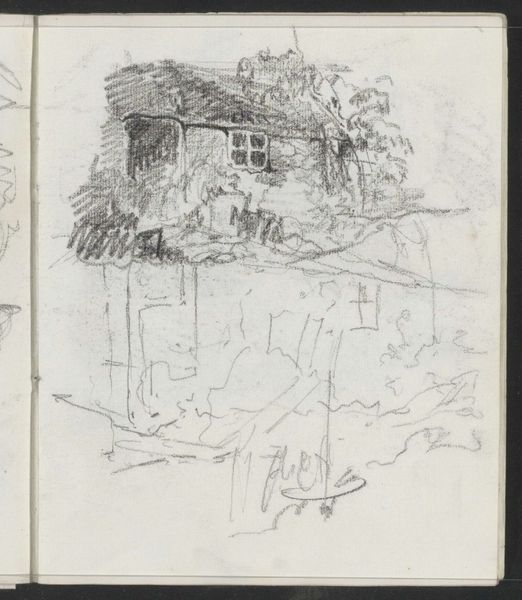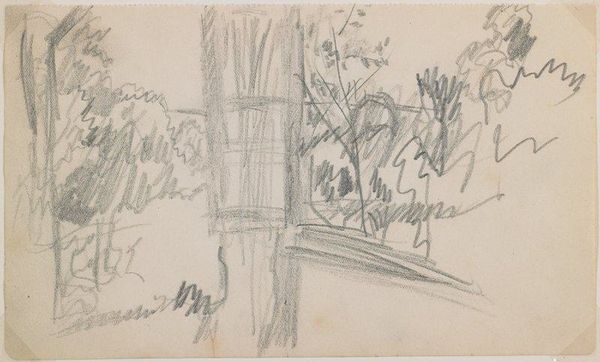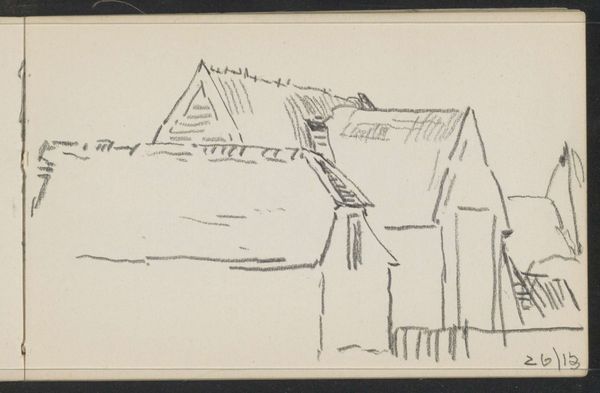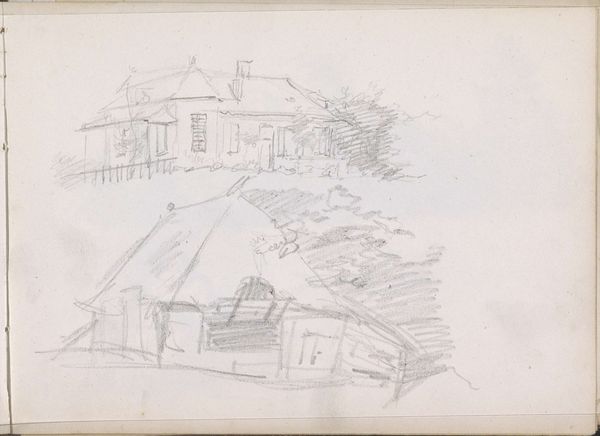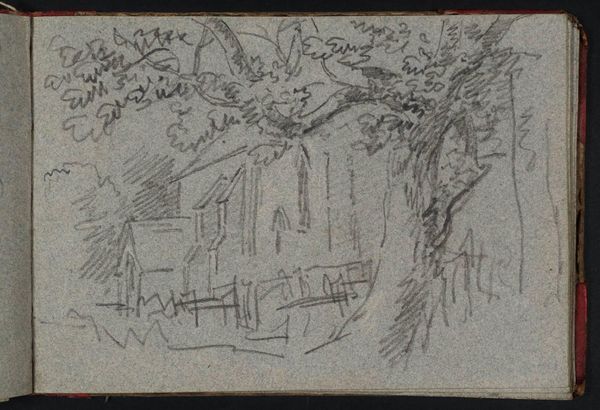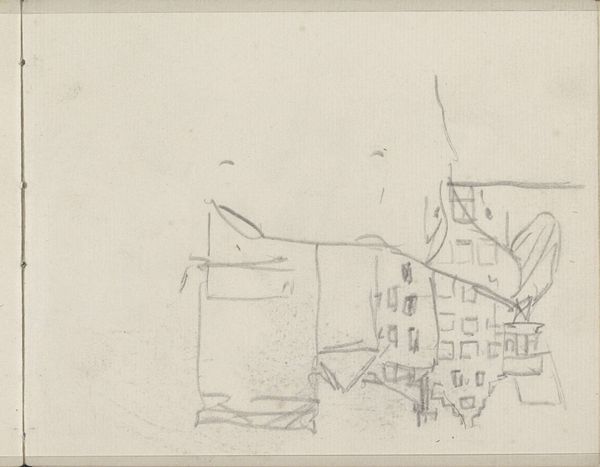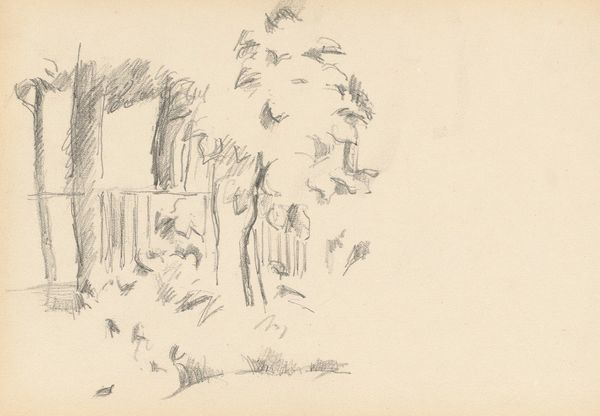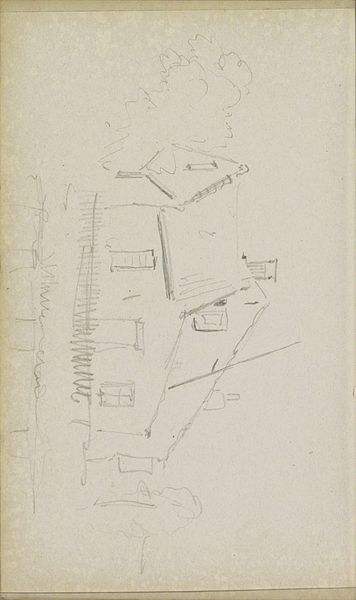
drawing, pencil
#
drawing
#
landscape
#
pencil
#
modernism
Copyright: George Bouzianis,Fair Use
Editor: Here we have George Bouzianis’s "House in the Countryside" from 1931, a pencil drawing. There’s a simplicity to it that’s appealing. What stories do you think it could tell us? Curator: Bouzianis, working in this modernist style, offers more than just a landscape; he offers a critique of the idyllic. Consider when this piece was made – 1931. This was a period of global depression and growing social unrest. Does this rural scene, with its almost frantic pencil strokes, present a yearning for simpler times, or does it betray a deeper anxiety about the instability of that era? Editor: So, instead of just a peaceful scene, it's maybe about the tensions of the time? I hadn't thought of it that way. Curator: Exactly! And look closer at the structure of the houses. They’re quite rudimentary, almost hastily drawn. Could that reflect on social precarity and the impermanence experienced by many during this period? The fence looks fragile. Is it protection or mere suggestion of property? Editor: That makes me see it differently. It’s not just a house; it represents larger issues, like the gap between how things look and what’s really going on. The drawing’s messiness becomes more powerful knowing that. Curator: Precisely. Bouzianis encourages us to question surface appearances and see art as a dialogue with the socio-political context in which it was created. What seems like a simple drawing then transforms into a visual statement about the complexities of life in the early 1930s. Editor: Wow, that’s insightful! It’s easy to overlook those layers if you don't dig deeper. I'll never look at a landscape the same way. Curator: I think looking for such complex layers enriches our understanding of not just art, but also how people perceive their environments, then and now.
Comments
No comments
Be the first to comment and join the conversation on the ultimate creative platform.

